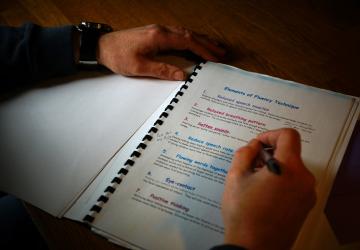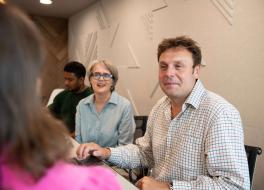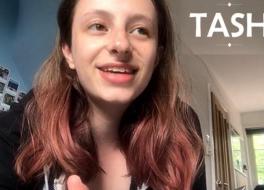

My boy stammers. So?
Parent Rebecca Flynn talks about being involved in her child's therapy.
It was evident from the age of three that our son had a stammer. It felt like the end of the world – what would everybody think? How would he cope? Knowing very little about stammering, we believed our GP, or wanted to, that it would ‘go away’. Five years later, after much perseverance, we finally got some constructive help.
During those wilderness years I guess we coped by speaking for him, ignoring his stammer, blaming computer games (yes, really), questioning him about why he could say something one time but not another…just generally searching for admittedly tenuous links between ‘good’ and ‘bad’ days.
turning point
This was all to change though when he was finally offered NHS therapy at the age of nine. He had sessions in school with a therapist, who was amazing, although it wasn’t until some time later that we really understood and believed what she was telling us – that stammering didn’t matter! When our son was fortunate enough to be included on a course for children who were moving from primary to secondary school, we were put in a position that really began to challenge our mindsets.
The intensive two-week course not only involved children working intensively with speech therapists, but also the parents. We were fortunate to have incredibly understanding bosses who allowed us leave so that we could attend the second week. We had no idea about the intensity and power of the journey we were about to begin.
The parental training was completely independent from the children’s work and was hosted by two therapists. Sat in a room, in a circle on utilitarian chairs, we began. We began to learn: why were we there? Who was it for? What did we want to gain from the experience?
It was so good to share with others the angst, the frustration, the not knowing what to do and the isolation.
Had it crossed my mind that stammering was normal and that fluent speech was more difficult for those who stammer? To be honest, not really. As simple as that sounds, it was something I don’t think I had ever given conscious thought to. We began to learn the technique that the children started to master the previous week and had to use it with other parents. We even had homework to practise this in the real world (see the picture above). The ‘technique’ I would best describe as an exaggerated slowing down of speech. As you can imagine, we all felt very self-conscious to start with but it soon became our normality – we met up with our children at lunchtime and spoke with them using it. We even ordered food in the local shops.
Sharing with other parents
What about us parents? All from very different backgrounds but with a shared interest. It didn’t matter who we were – stammering being the leveller here – we all shared the same emotions, thoughts, hopes and experiences. It was so good to share with others the angst, the frustration, the not knowing what to do and the isolation. It was an opportunity to be honest – a cathartic and emotional process.
This was also happening with the children. Imagine you’re in a room full of people who speak a different language, and then someone enters who speaks your language – how would you feel? The children, although shy at first, got to know each other. The lively chatter at lunchtime was testament to this. They supported each other. My son, who had never spoken on the phone, received a call from one of the friends he made on the course a couple of days in and managed a conversation. This was just the start. These random acts of support were incredible for their confidence. No-one told them to do it – they felt it was inherently the right thing to do. They set up a group chat and still keep in touch with each other.
What did I learn? I learnt that stammering doesn’t matter, but the way I respond to someone who stammers does.
At the end of the fortnight the children each gave a presentation, supported by a therapist if they wanted. All of them were amazing – there wasn’t a dry eye in the house. These children, some of whom wouldn’t talk at the start, were able to look the rest of us in the eye and had the confidence to talk to us. I still, almost a year later, feel overwhelmed when I look back. As a group, we all met up some time after the course. The children chattered constantly because they could – it didn’t matter if they stammered because really, who cared?
What did I learn? I learnt that actually stammering doesn’t matter, but the way I respond to someone who stammers does. Our son is happy-go-lucky. His friends don’t think about his stammer; it’s part of who he is. He loves school and they are supportive. He’s aware that sometimes his stammer is worse but he applies the technique he learned when he chooses to, I’m happy to say – not because he thinks he should!
So my boy has a stammer. So what?
If you're a parent looking for help, visit our Help For parents page. Or, phone our helpline free on 0808 802 0002 or start a webchat.






























